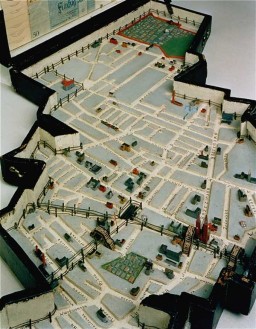You searched for: 5G基站源码搭建定制开发【TG���������@EK7676】平台包网搭建5G基站源码搭建定制开发【TG���������@EK7676】平台包网搭建1GZTwVod8U
<< Previous | Displaying results 441-450 of 821 for "5G基站源码搭建定制开发【TG���������@EK7676】平台包网搭建5G基站源码搭建定制开发【TG���������@EK7676】平台包网搭建1GZTwVod8U" | Next >>
-
Albert Speer standing in the defendants' dock at Nuremberg
PhotoThe defendants and their lawyers at the International Military Tribunal trial of war criminals at Nuremberg. Defendant Albert Speer (standing at right) delivers a statement in the dock. Nuremberg, Germany, November 20, 1945-October 1, 1946.
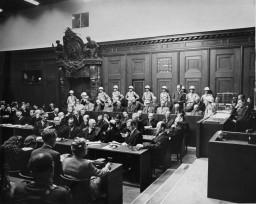
-
Destruction in Warsaw
PhotoFollowing the German invasion of Poland on September 1, 1939, Warsaw suffered heavy air attacks and artillery bombardment. German troops entered the city on September 29, shortly after its surrender. This photograph was taken by Julien Bryan, an American documentary filmmaker who captured the German bombardment and its impact on the Polish citizenry. Warsaw, Poland, ca. 1939.
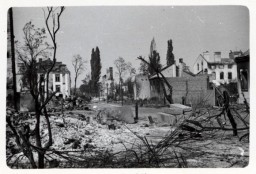
-
Portrait of writer Sigrid Undset
PhotoPortrait of writer Sigrid Undset, who won the Nobel Prize for Literature in 1928. Often with feminist themes, her novels were banned and burned in part because of her public criticism of the Nazi regime. Photo taken by Anders Beer Wilse on July 1, 1923.
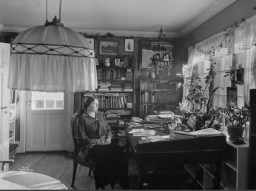
-
Germany invades Poland
FilmGermany invaded Poland on September 1, 1939, beginning World War II. Quickly overrunning Polish border defenses, German forces advanced towards Warsaw, the Polish capital city. This footage from German newsreels shows German forces in action during the invasion of Poland. Warsaw surrendered on September 28, 1939.
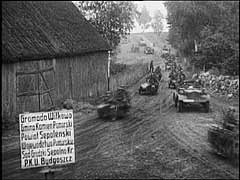
-
Helen (Helene Katz Wohlfarth) Waterford describes giving up her daughter to be sheltered
Oral HistoryAlthough originally from Germany, Helen was living in the Netherlands with her husband and young daughter when the Germans invaded in May 1940. Helen and her husband sent their daughter to non-Jewish friends, and went into hiding themselves. They stayed in a variety of places arranged by a friend who was active in the underground. On August 25, 1944, Helen and her husband were arrested. They were sent first to Westerbork and then to Auschwitz, where they were separated. Helen worked in the I. G. Farben…
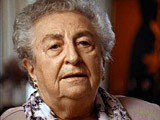
-
Gisha Galina Bursztyn: Maps
Media EssayBorn to Jewish parents in Poland, Gisha Galina Bursztyn moved to the city of Warsaw after she married. On September 1, 1939, Germany invaded Poland. Warsaw fell four weeks later, and a ghetto was set up in November 1940. During a massive roundup i...
-

-
Chiune Sugihara
Media EssayChiune (Sempo) Sugihara (January 1, 1900-1986) was the first Japanese diplomat posted to Lithu...

-
Hoess affidavit
ArtifactAffidavit signed by Rudolf Hoess attesting to the gassing of Jews while he was the commandant of the Auschwitz killing center. The German text reads: "I declare herewith under oath that in the years 1941 to 1943 during my tenure in office as commandant of Auschwitz Concentration Camp 2 million Jews were put to death by gassing and a 1/2 million by other means. Rudolf Hoess. May 14, 1946." The confession is also signed by Josef Maier of the US Chief of Counsel's office. A photoreproduction of the original…
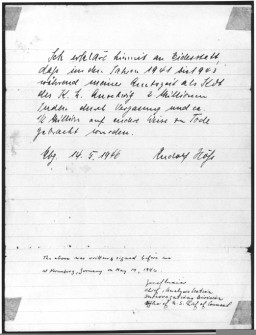
-
Lodz ghetto model
ArtifactLeon Jakubowicz, a shoemaker by training and a native of Lodz, began constructing this model of the Lodz ghetto soon after his arrival there from a prisoner-of-war camp in April 1940. The case holds a scale (1:5000) model of the ghetto, including streets, painted houses, bridges, churches, synagogue ruins, factories, cemeteries, and barbed wire around the ghetto edges. The model pieces are made from scrap wood. The case cover interior is lined with a collection of official seals, a ration card, and paper…
